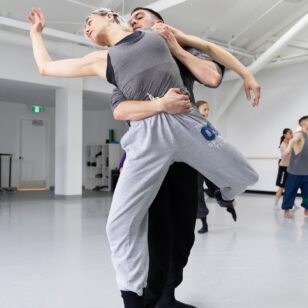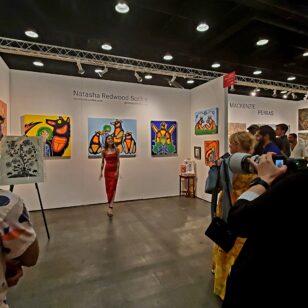
This year, in the heat and never-ending sunniness of summer, I spent most of the time out of doors. However, with the return of cooler weather and rainy days, I’ve started to long for contemplation in galleries once again.
Claude Monet’s Secret Garden at the Vancouver Art Gallery (VAG) has been on my do-list for quite some time. With the exhibition closing in just over two weeks, I managed to fit in a visit. I’d highly recommend doing the same before it ends.
The exhibition runs until October 1, 2017 and has generated considerable buzz from art enthusiasts in the city. I went on a weekend afternoon and the VAG was very busy. Obviously, other people had the same idea for a rainy day activity. I’d suggest getting there early to avoid line-ups and congestion in the gallery rooms and corridors.

Photo Credit: Tara Lee
Secret Garden is located on the main first floor of the gallery and is an impressive collection of Monet’s works from the Musée Marmottan Monet, Paris. Michel Monet, son of Claude Monet, left his paintings to the gallery in 1966, making it the recipient of the largest collection of Monet works anywhere. The exhibition at the VAG is so exciting since it is the most significant one in Canada in two decades.
The thirty-eight paintings on display cover the rich trajectory of Monet’s artistic endeavours and present a range of different subject matter, from French industrialization to more pastoral works of the countryside.
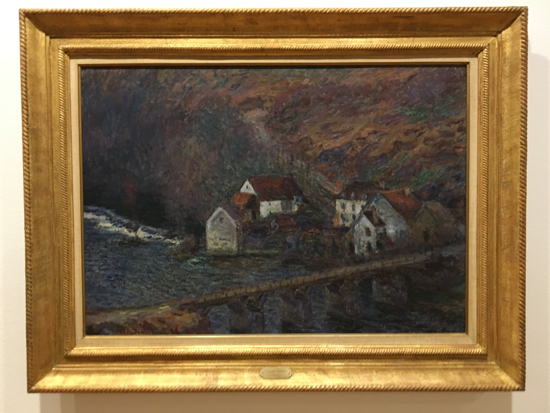
The Bridge at Vervyl, 1889
Together, the works showcase the groundbreaking nature of Monet’s artistic eye and representation. This was an artist willing to paint France at a specific temporal moment, refusing to look away from controversial signs of modernization, such as trains and factories. Many of his contemporaries were still wedded to pre-industrial nostalgic scenes. The paintings also show Monet’s attempts to capture the ephemeral, whether in light or movement.
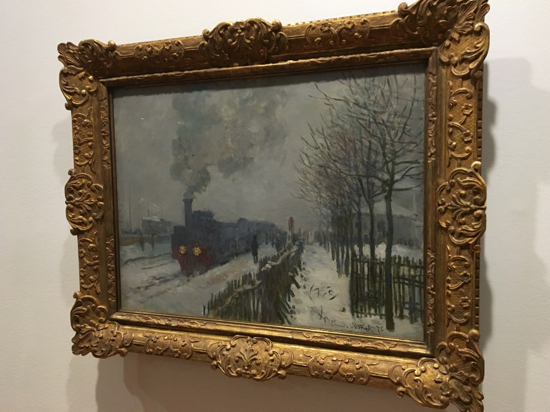
Train in the Snow, The Locomotive, 1875
Of course, of particular interest in the exhibition is the emergence of Impressionism and Monet’s deviation from solid forms and shading to a more experimental use of paint on canvas premised on short, disconnected brushstrokes with intensely vibrant displays of colour. For example, a work Taking a Walk Near Argenteuil, where the Monet lived from 1871-1878, draws the eye to the movement of clouds, people, leaves, and the rich texture of the countryside.
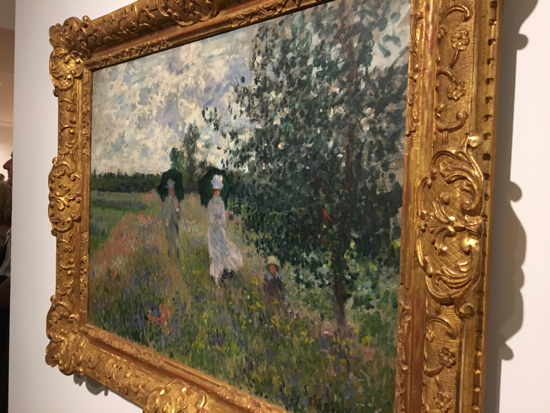
Taking a Walk Near Argenteuil, 1875
The most recognizable of the works for me are found within Monet’s Giverny period, a prolific span of years from 1883 until his death in 1926.
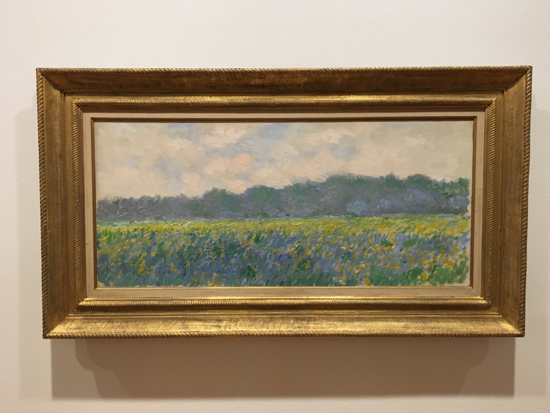
Field of Yellow Irises at Giverny, 1887
The artist purchased a house in this northern French village where he painted in the open air, depicting his evolving gardens and ponds as the seasons unfolded over the decades. Iconic water lily paintings are included in the VAG exhibition, mesmerizing in their play with the surface of the water and what it dreamily reflects.
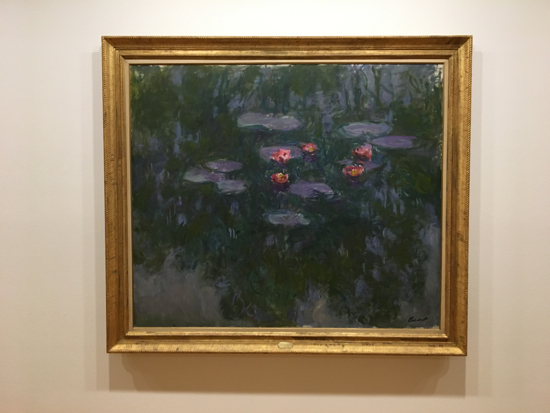
Water Lilies, 1916-1919
I was also drawn to later works of Monet during a time when he began to suffer from cataracts and failing vision, which had an effect on his ability to distinguish colours. The artist primarily had the labels on the tubes of paint to guide him in his colour choice. It’s astounding he was able to create beauty amidst such loss.
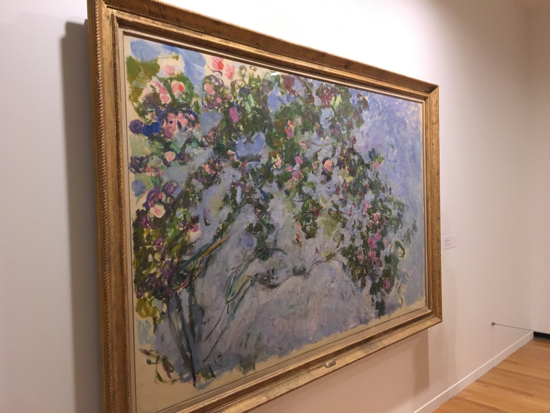
Roses, 1925-1926
Also worth viewing is a documentary of Monet’s life and artistic evolution that provides more context and background to the stunning works on display.
Overall, Secret Garden is the ideal outing for the end of summer/beginning of fall. After spending a couple of hours in the gallery–including viewing the Emily Carr exhibition, Into the Forest, on the top floor–head to the Gallery Café for a drink, a bite, and an opportunity to think and chat about what you’ve just visually absorbed.
UPCOMING EXHIBITIONS:
There’s also plenty to look forward to this fall and winter at VAG. Here are some highlights:
Entangled: Two Views on Contemporary Canadian Painting (September 30, 2017 to January 1, 2018)
This exhibition looks at two modes of painting in Canada from the 1970s onwards. Thirty-one artists who were part of these divergent aesthetics will be on display.
True Nordic: How Scandinavia Influenced Design in Canada (October 28, 2017 to January 28, 2018)
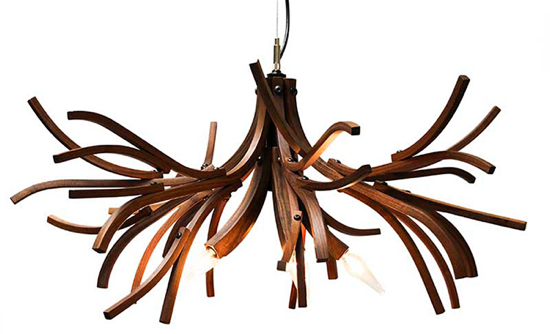
Lars Dressler and Jason Dressler, Brothers Dressler, Branches Chandelier, 2009, white oak, Courtesy of Brothers Dressler
With Scandinavian artistic ethos all the rage currently, this exhibition is sure to be of interest. It will look at craft and industrial design and its appearance and influence in this country.
Portrait of the Artist: An Exhibition from the Royal Collection (October 28, 2017 to February 4, 2018)
From the Royal Collection, this meta-exhibition of over eighty works explores representations of artists, either done through self-depiction or by others. What does it mean to be a artist? How do they perceive themselves and how do others see them?
Gordon Smith: The Black Paintings (October 21, 2017 to February 4, 2018)
Look forward to a mounting of Gordon Smith’s black paintings, exploring his wartime experiences as well as texture, layering, collage techniques, and the expressiveness of paint.
Carol Sawyer: The Natalie Brettschneider Archive (October 28, 2017 to Feburary 4, 2018)
This collection will display Carol Sawyer’s efforts to connect singer and artist Natalie Brettschneider to musicians and artists in mid-century British Columbia.
Further info on all exhibitions is available on-line.













